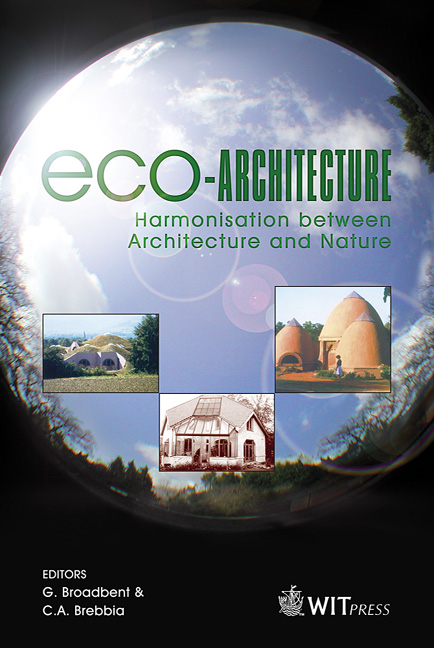Indicators For The Ecological Planning Of Buildings
Price
Free (open access)
Transaction
Volume
86
Pages
10
Published
2006
Size
761 kb
Paper DOI
10.2495/ARC060231
Copyright
WIT Press
Author(s)
C. Seyler, C. Stoy, I. Lützelschwab & S. Kytzia
Abstract
Until now, ecological assessments of buildings have been focussing on the use phase, such as the consumption of operating energy or the emission of in-house pollutants. So far, little emphasis has been placed on the construction and disposal phase of buildings. As the use phase is getting more and more optimised, environmental impacts caused by the construction phase are gaining in importance. To optimise the ecological performance of a building information is needed in the early design phases when there is still a wide scope for decision. This paper presents a method, based on cumulative energy indicators, which allows assessing the environmental impacts of a building when only a little information is known. Keywords: life cycle, indicator, early design phase, building material, environmental impact assessment. 1 Introduction In the last years the main focus of environmentally friendly buildings has been laying on the use phase. Large efforts have been put, e.g., on the optimisation of operation energy and the prevention of indoor pollutant emission. Those environmental impacts have become more and more optimised, e.g., by using better insulation, the use of energy saving machines or by the substitution of critical materials in housing spaces. As a result, the other phases in the building’s life cycle, such as the construction phase or the disposal phase, have gained in importance. Recent LCA studies have clearly shown a shift of the main environmental impacts from the use phase towards the construction phase for
Keywords
life cycle, indicator, early design phase, building material, environmental impact assessment.





